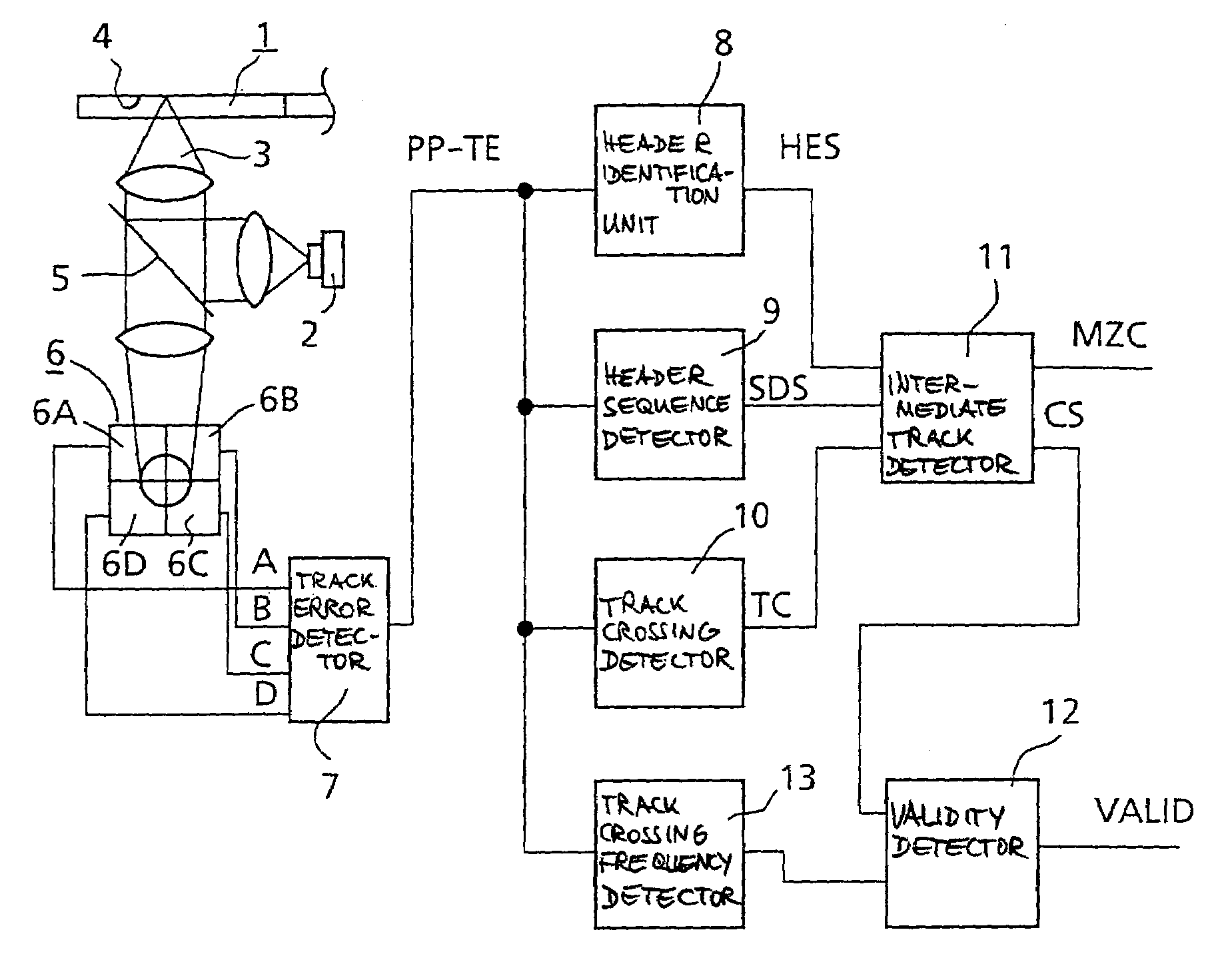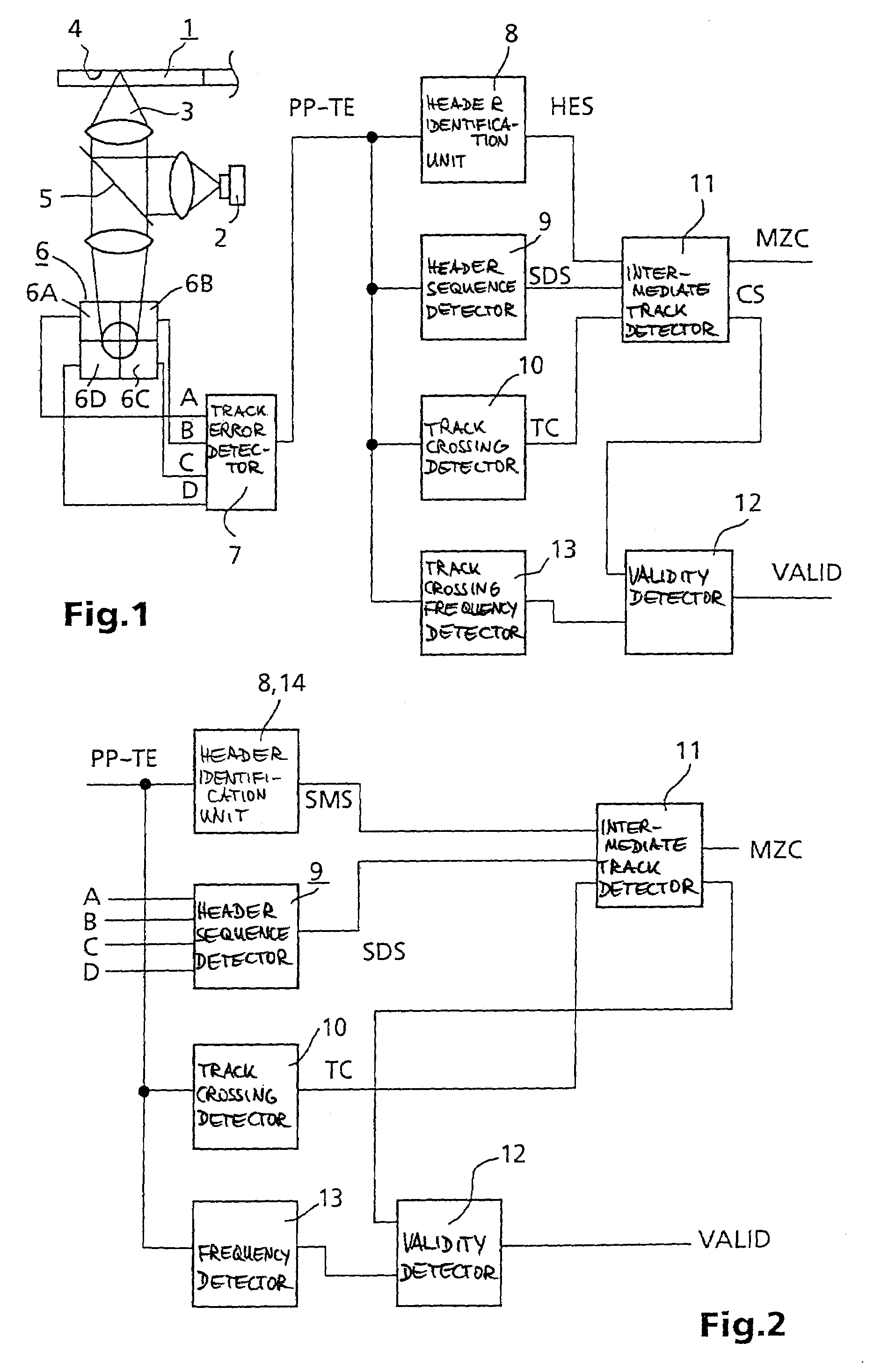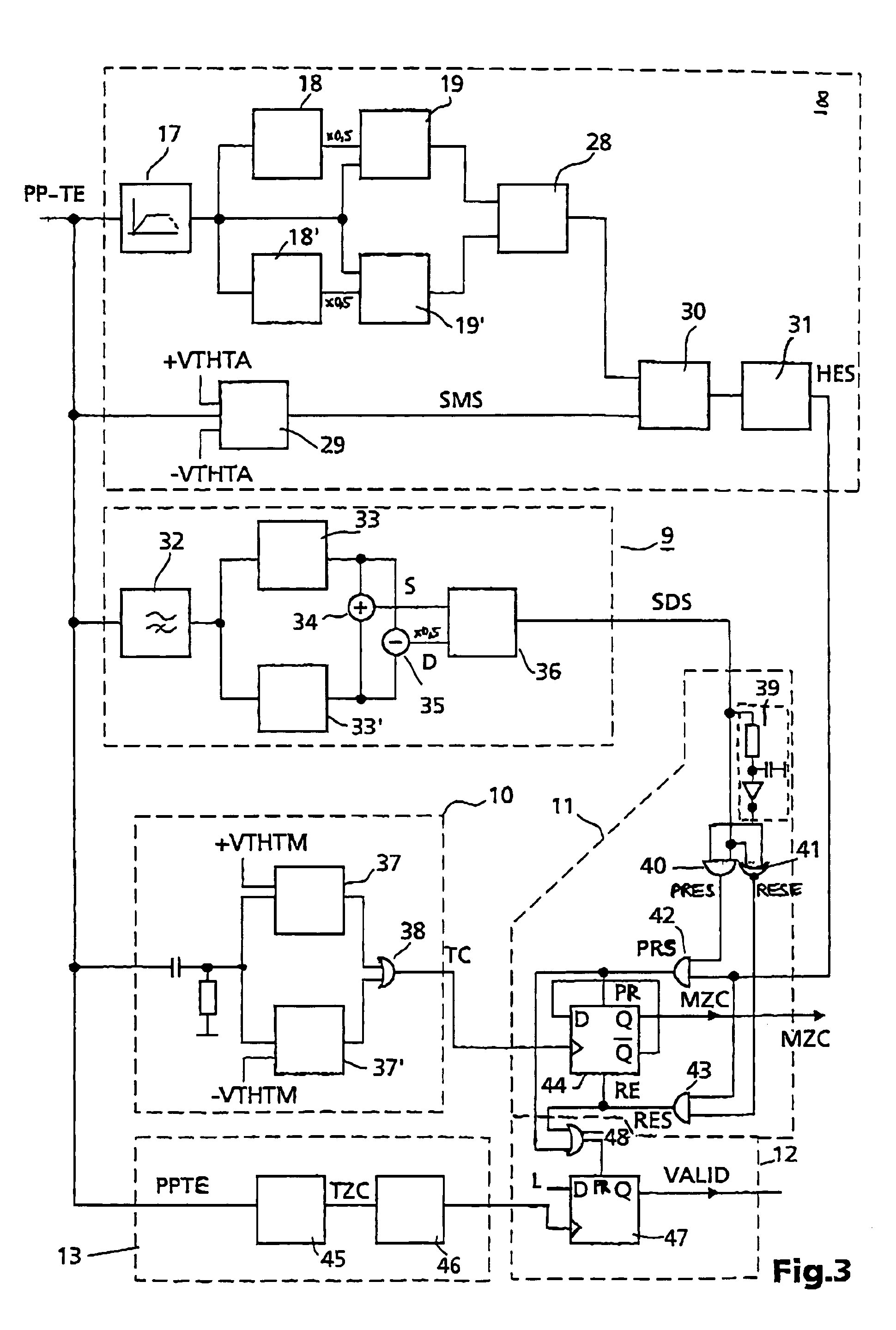Apparatus for scanning optical recording media
an optical recording media and apparatus technology, applied in the field of apparatus for scanning optical recording media, can solve the problems of inability to compare the phase angle of the track error signal and the mirror signal for the purpose of direction identification, and the disadvantage of known apparatuses, so as to increase the reliability of the determination facilitate reliable identification, and increase the reliability of the intermediate track signal.
- Summary
- Abstract
- Description
- Claims
- Application Information
AI Technical Summary
Benefits of technology
Problems solved by technology
Method used
Image
Examples
Embodiment Construction
[0023]FIG. 1 shows a schematic illustration of an apparatus according to the invention. A recording medium 1, which is illustrated in section, is scanned by means of a light beam 3 generated by a light source 2. In this case, the light beam 3 is focused onto an information-carrying layer 4 of the recording medium 1. The light beam 3 is reflected from the information-carrying layer 4, passes through a semi-transparent mirror 5 and arrives at a multi-zone detector 6. The latter has four detector elements 6A, 6B, 6C, 6D in the exemplary embodiment. The detector signals A, B, C, D output by the detector elements are fed to a track error detector 7, which outputs a track error signal PP-TE. The track error signal PP-TE is fed to a header identification unit 8, which outputs a header identification signal HES when a header area is present. The track error signal PP-TE is furthermore fed to a header sequence detector 9, which outputs a sequence detector signal SDS. The track error signal P...
PUM
 Login to View More
Login to View More Abstract
Description
Claims
Application Information
 Login to View More
Login to View More - R&D
- Intellectual Property
- Life Sciences
- Materials
- Tech Scout
- Unparalleled Data Quality
- Higher Quality Content
- 60% Fewer Hallucinations
Browse by: Latest US Patents, China's latest patents, Technical Efficacy Thesaurus, Application Domain, Technology Topic, Popular Technical Reports.
© 2025 PatSnap. All rights reserved.Legal|Privacy policy|Modern Slavery Act Transparency Statement|Sitemap|About US| Contact US: help@patsnap.com



